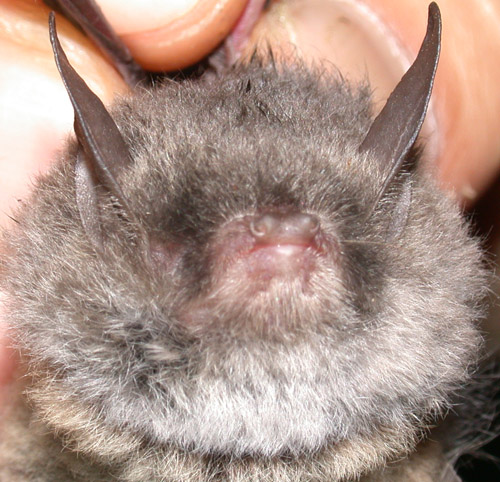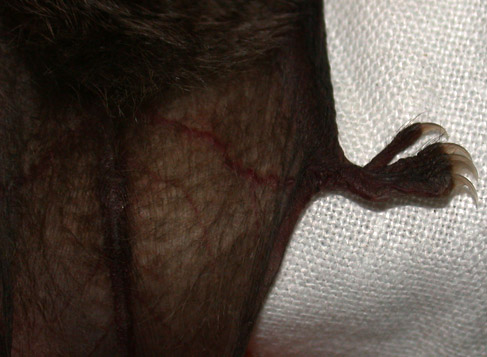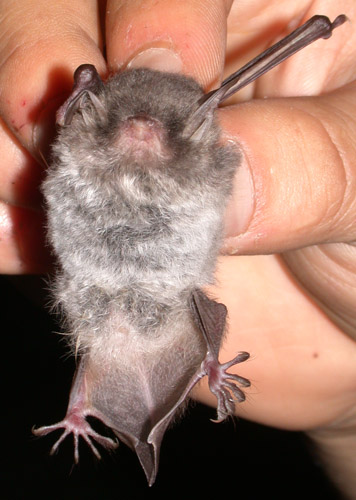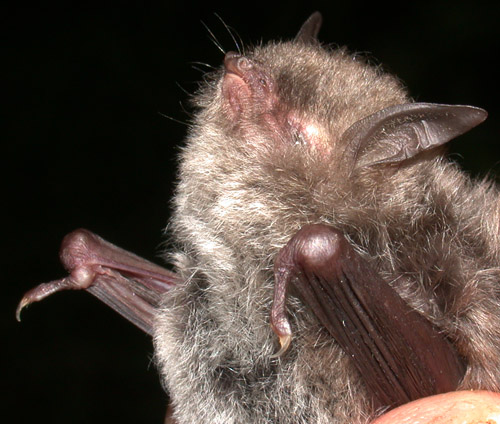Myotis laniger
Chinese Water Myotis
Hua'nanshui Shu'erfu
Morphological description Life history Distribution Habitat Roost sites and roosting patterns Emergence and flight pattern Foraging behaviour Echolocation calls Status and protection


Morphological Description
· Analysis of cytochrome b sequences by Manuel Ruedi and Benoit Stadelmann placed the bat as phylogenetically distant from the similar European trawling species M. daubentonii.
· Fur grey-brown, whitish ventrally.
· Forearm length 34.7-38.9 mm. Ears relatively long and pointed. Hind foot large - longer than half tibia length.
· Smith & Xie (2008) give forearm length = 34-36 mm, and state wings attached to base of toes.Our bats appeared to have the wing membrane attached to ankle.
Life history
· Little known
Distribution
Smith & Xie (2008) consider M. laniger to be widespread in SC and SE China. We have caught bats with large feet that fit this species description (except perhaps for the position of attachment of the wing membrane) in Guangxi, Yunnan and Sichuan where they are encountered quite frequently. It is not clear if bats referred to as M. longipes represent a different species in China.
Habitat
· Little known. Large feet suggest they capture food by trawling.
Roost sites and roosting behaviour
· Roosts in caves.
· Emergence and flight pattern
· Little known.
Foraging behaviour
· Not known.
Echolocation calls
· Emit broadband, brief sweeps ranging from >90 kHz to 31-32 kHz. in < 7 ms.
Status and protection
· There is no estimation of population size for China.
· The Chinese water Myotis is listed as RL-LC in China (Smith & Xie 2008).
· Caves, streams and old buildings should be protected as their habitats.

